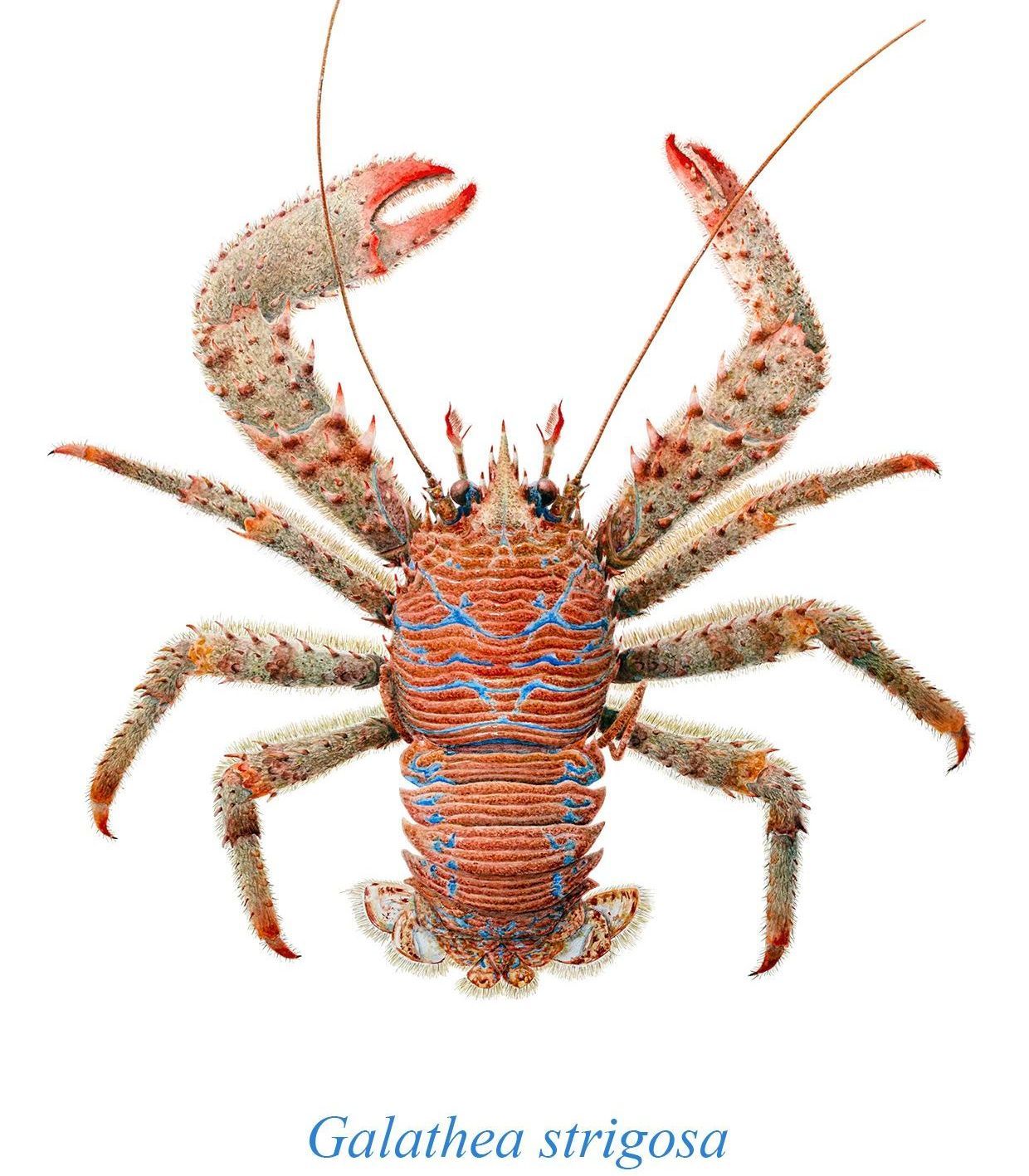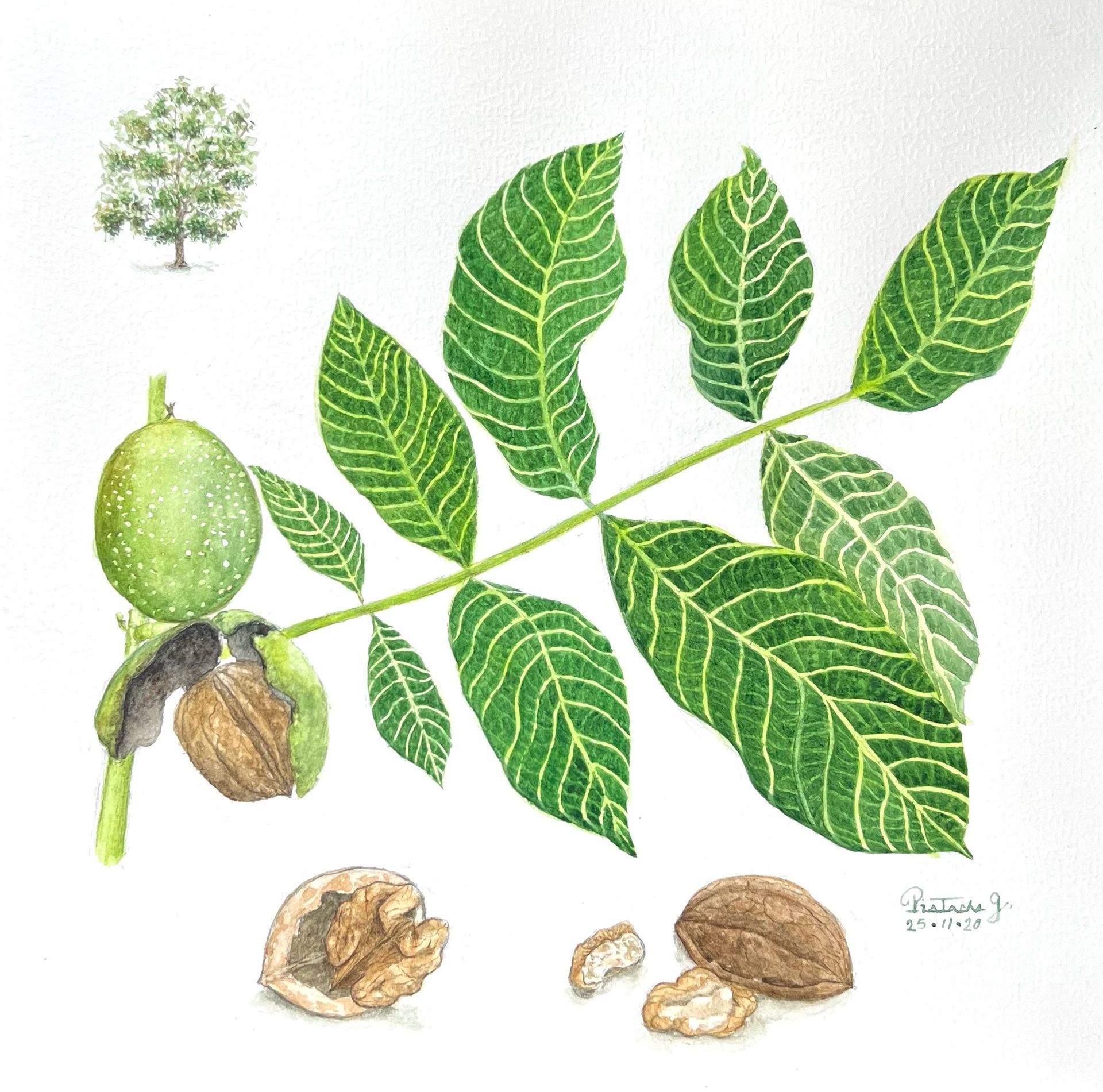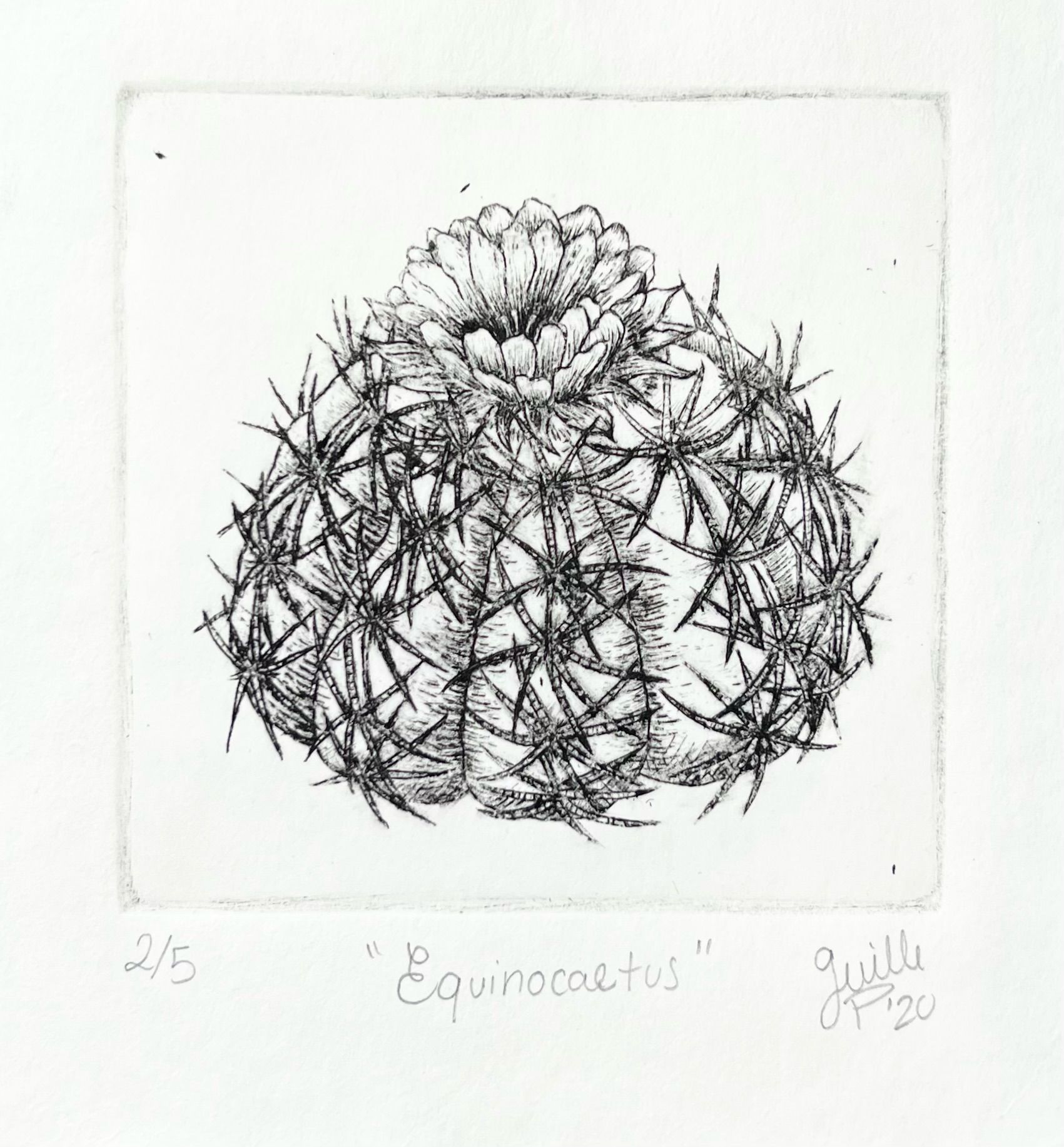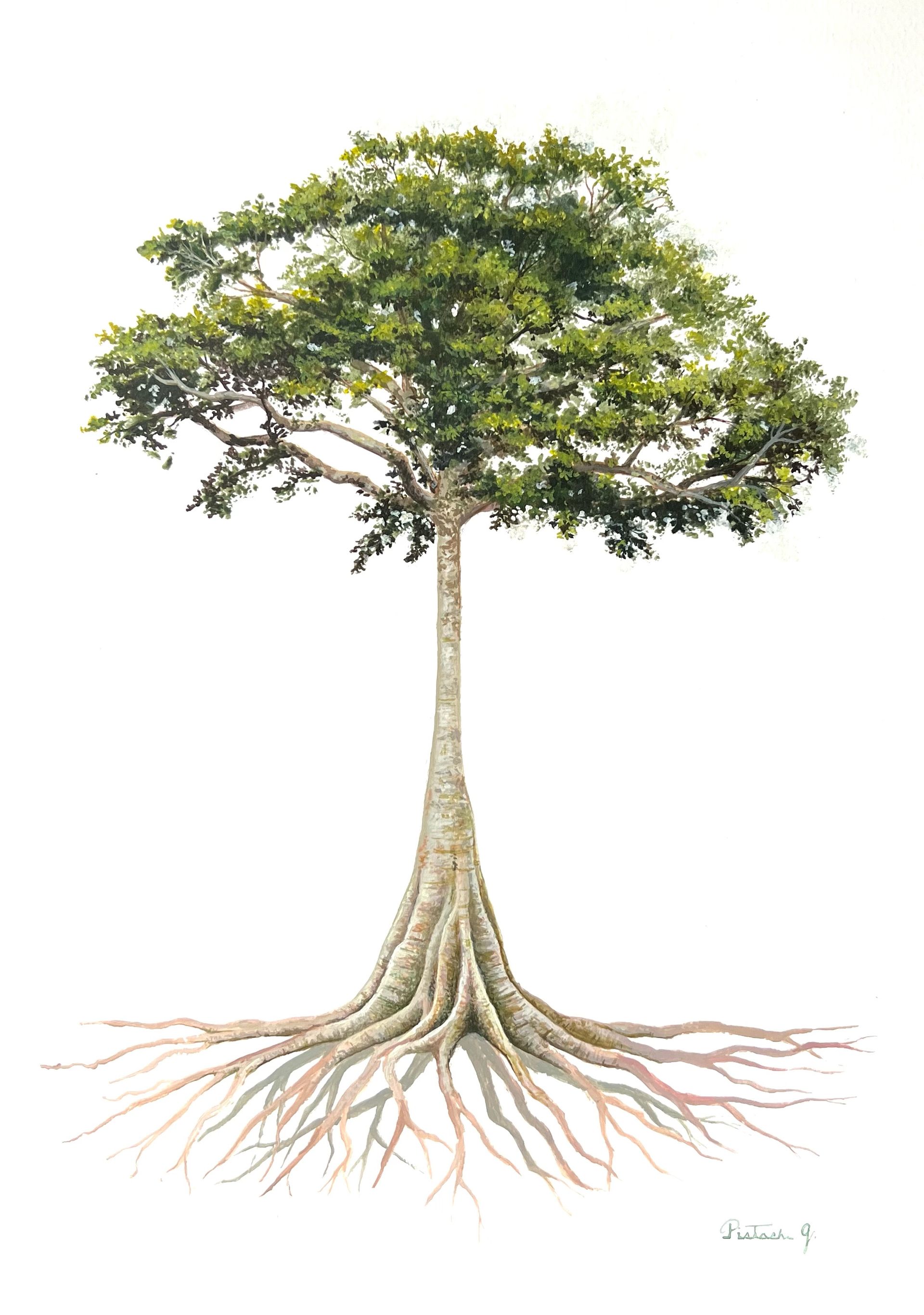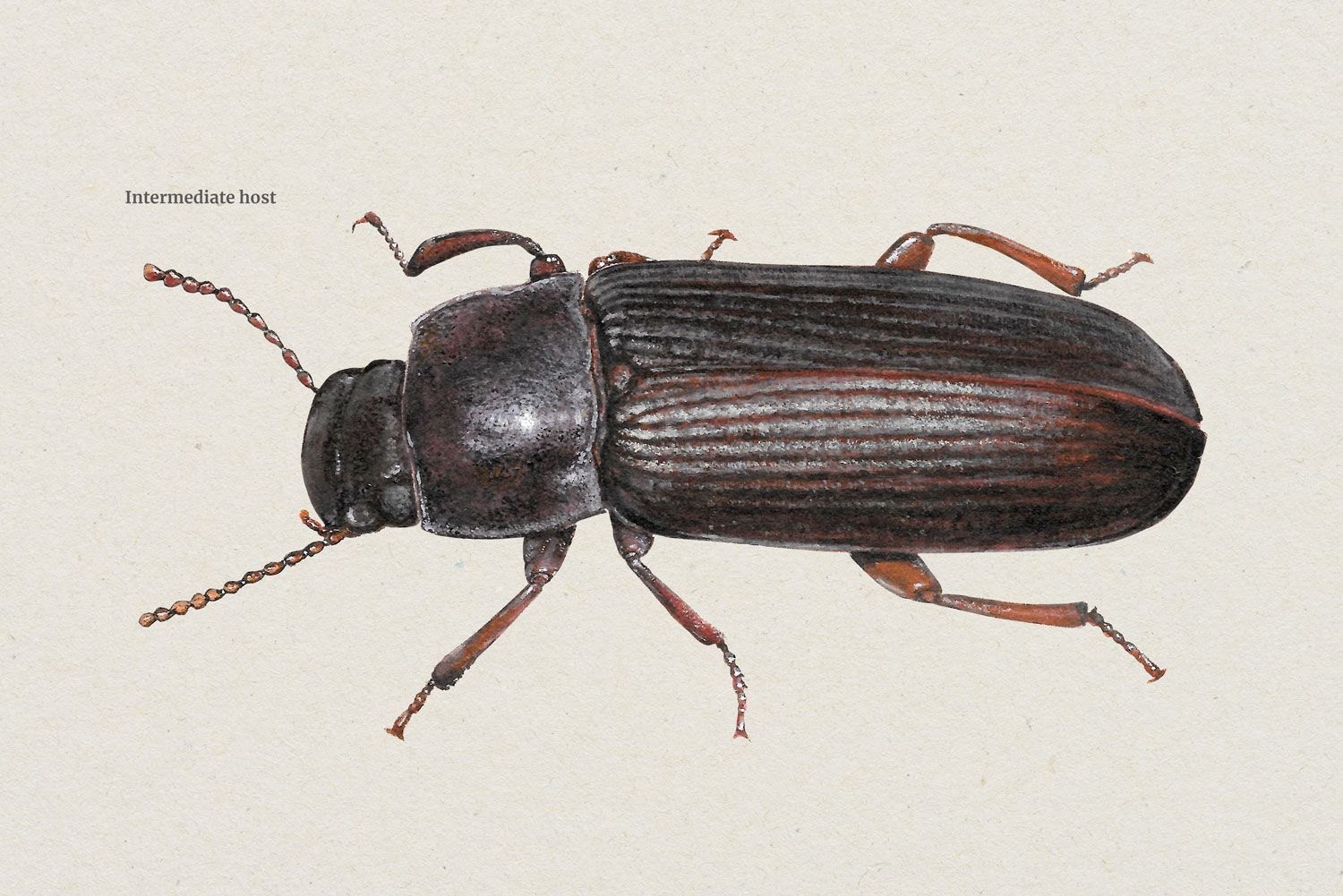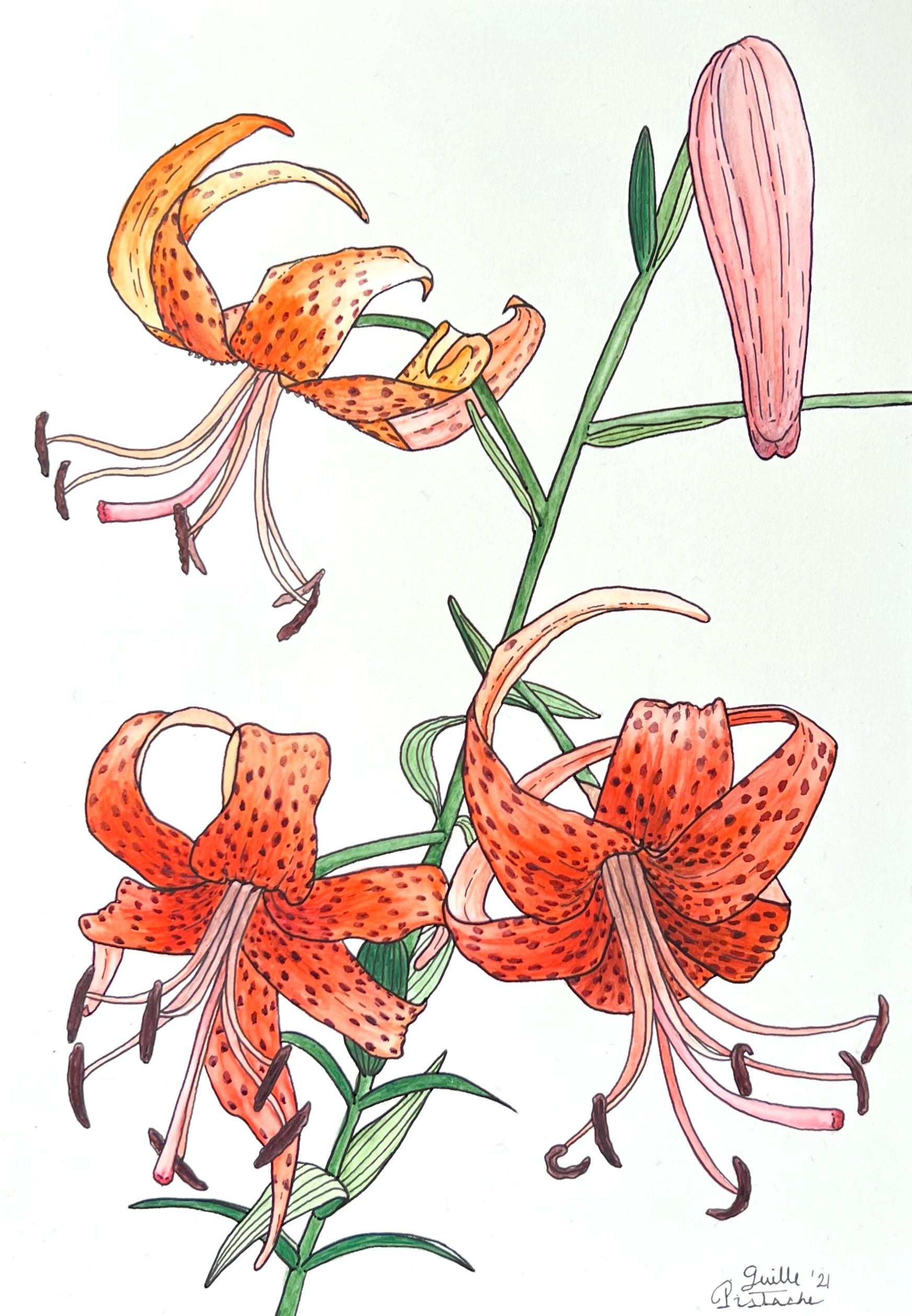Guille Pistache's illustrations are inspired by XVIII and XIX century natural history prints of the great scientific expeditions of the time, such as the Challenger Expedition, and the work of entomologist, naturalist and scientific illustrator Maria Sibylla Merian.
To create her illustrations, Guille Pistache mainly uses analog techniques, such as graphite and watercolor. The main objective of her work is to represent native or endangered species in order to raise awareness about environmental problems and climate change that have caused the extinction and threat of several species around the world.
Cabinet of curiosities
For this exhibition, Guille Pistache decided to name her works in a common label called “cabinet of curiosities” to talk about the barriers that XIX century women faced in scientific social circles, and how this has repercussions in our society today. According to the UN Educational, Scientific and Cultural Organization, “even though more girls are in school today than ever before, women and girls are underrepresented in STEM (science, technology, engineering, and mathematics) education”.
A predecessor of natural history museums were the cabinets of curiosities, rooms dedicated to displaying collections of exotic objects brought from different parts of the world, a byproduct of European colonial expansion in countries such as England and the Netherlands.
These cabinets reflect the scientific enthusiasm of the time, eager to classify and categorize the natural world.
With this biological enthusiasm came the birth of scientific societies, such as The Linnean Society of London, the oldest natural history club. But not everyone was accepted into this club. Women could not be members or even attend public meetings of the Society. This is how we get to the first curiosity, a seaweed.
Curiosity #1: Seaweed, Laminaria digitata
Collecting and sorting seaweeds was a properly viewed hobby for a Victorian woman who would seek to approach the forbidden world of scientific discovery.
It required "sensitivity" and could be done in a safe domestic environment close to home without the danger of some lurking exotic animal or the "danger" of the mind analyzing the sexual parts of a plant.
As researcher Stephen Hunt comments “there was a taboo on botany, because Linnaean botany was based on the sexual parts…[and] that was seen as controversial”.
Curiosity #2 & #3: Seaweed, Anomaly, Galathea strigosa
Between 1872 and 1876 the British ship HMS Challenger circumnavigated the globe in one of the greatest marine expeditions that laid the foundations of modern oceanography.
Of the 243 people on board, none of them were women. Women were seen as bad omens and were not allowed on a ship, much less be part of a scientific expeditions.
Today women continue to experience gender discrimination in scientific fields such as oceanography, in addition, they also cope with instances of sexual harassment and assault.
Curiosity #4: Walnoot, Juglans regia
The Linnean Society of London is one of the oldest natural history clubs, founded 1788 by botanist Sir James Edward Smith. Nowadays anyone with an interest in natural history can be a member of this society, but for a woman in the 19th century this was not possible.
Women were not accepted into this club until 1904 after an exhaustive 4-year campaign led by botanist Marian Farquharson. Despite her best efforts, Farquharson was not accepted into the first group of women members of the Society. She had to wait another 4 years to be elected and when this time came her health was failing and she was unable to officially sign her registration to the Society.
Curiosity #5: Cactus, Echinocactus sp.
Cactus is the plant of choice associated with Mexico and it is not surprising since of the 1400 species known worldwide, 669 are Mexican.
One of the scientific illustrators who was in charge of exploring Mexican biodiversity and recognized for her beautiful illustrations of Cactaceae is Elvia Esparza Alvarado.
This renowned illustrator played an important role in Mexican science and is an icon of scientific illustration in this country.
Guille Pistache's illustrations are inspired by XVIII and XIX century natural history prints of the great scientific expeditions of the time, such as the Challenger Expedition, and the work of entomologist, naturalist and scientific illustrator Maria Sibylla Merian.
To create her illustrations, Guille Pistache mainly uses analog techniques, such as graphite and watercolor. The main objective of her work is to represent native or endangered species in order to raise awareness about environmental problems and climate change that have caused the extinction and threat of several species around the world.

